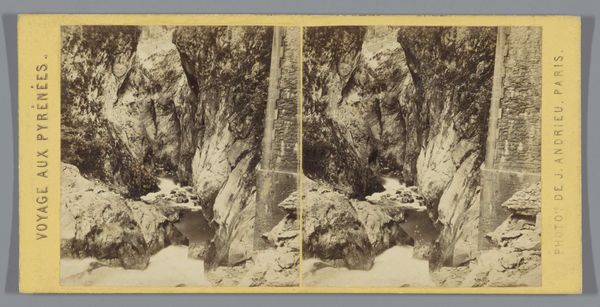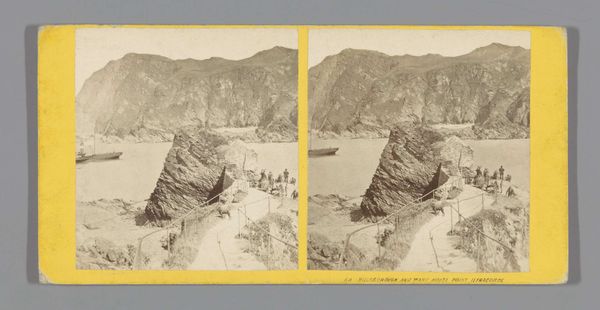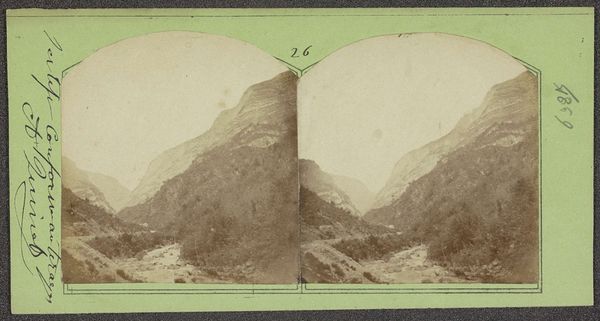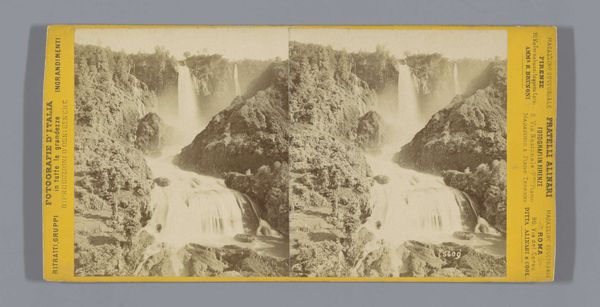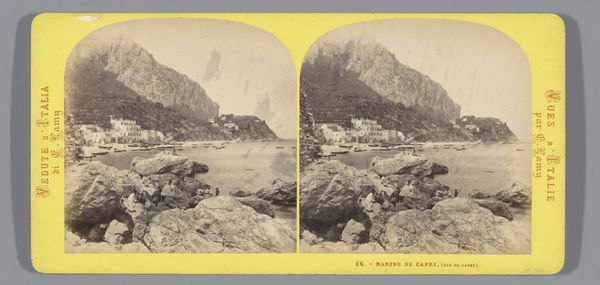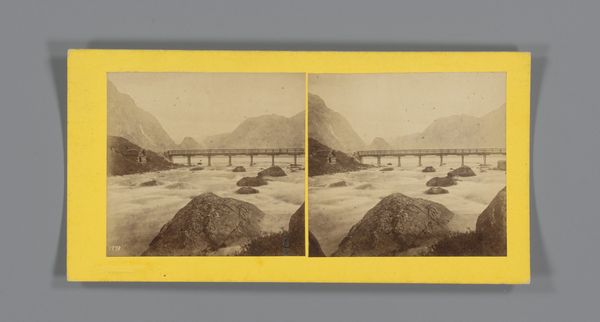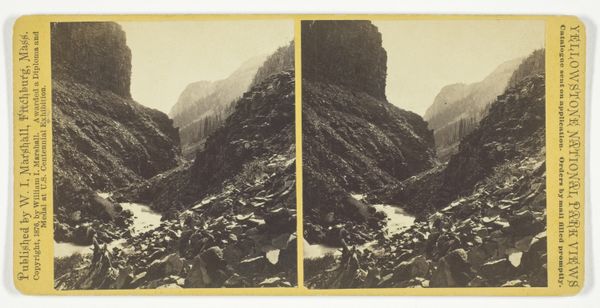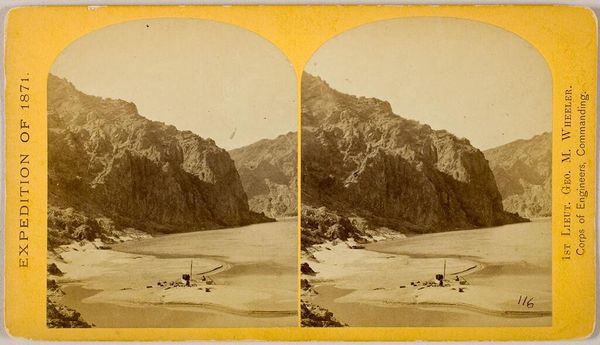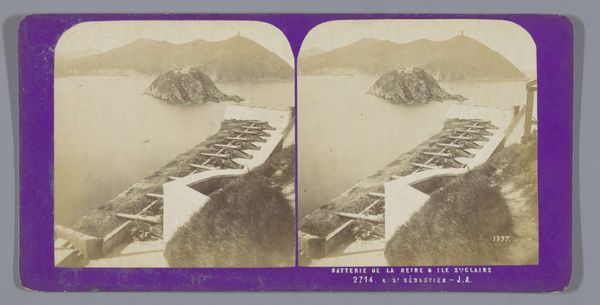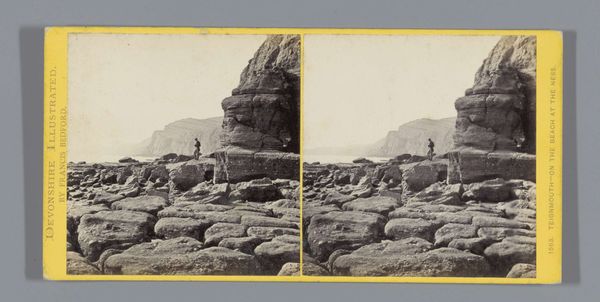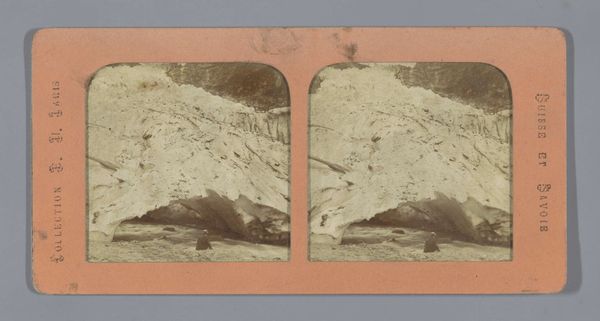
Dimensions: height 85 mm, width 170 mm
Copyright: Rijks Museum: Open Domain
Editor: This photograph, likely taken between 1850 and 1880, is titled "Rocks along the coast (presumably) near Devon". It is a gelatin silver print presented in stereo format. What strikes me most is how the dramatic coastline is captured, emphasizing the relentless power of nature. How do you interpret the enduring appeal of seascapes, especially from this era? Curator: These images resonate because of the Romantic fascination with the sublime – that sense of awe mixed with terror we experience when confronted with nature's raw power. Note the carefully arranged jagged rocks contrasted with the fluid, almost ethereal mist. What emotional or symbolic value do you think early photographers sought to capture and convey through these compositions? Editor: Perhaps a longing for the untouched wilderness, a retreat from industrial progress? Or a commentary on the vulnerability of human endeavors against the vastness of the natural world? Curator: Precisely. Consider how the rocks, symbols of endurance, meet the waves, representing constant change. This tension plays out in various cultures, from seafaring legends to spiritual beliefs. Are there any specific symbolic forms or recurring themes that capture your attention, here or in other seascapes? Editor: The persistent meeting of land and water, that eternal, perhaps even volatile, interaction between permanence and impermanence, is very present here. I never thought of the meeting of land and sea as potent symbols before, and this makes me rethink landscape photography! Curator: Indeed. The cultural memory of the sea and its relation to land offers many potent visual narratives. Thank you for prompting me to reflect further on the symbolic weight carried by images.
Comments
No comments
Be the first to comment and join the conversation on the ultimate creative platform.
